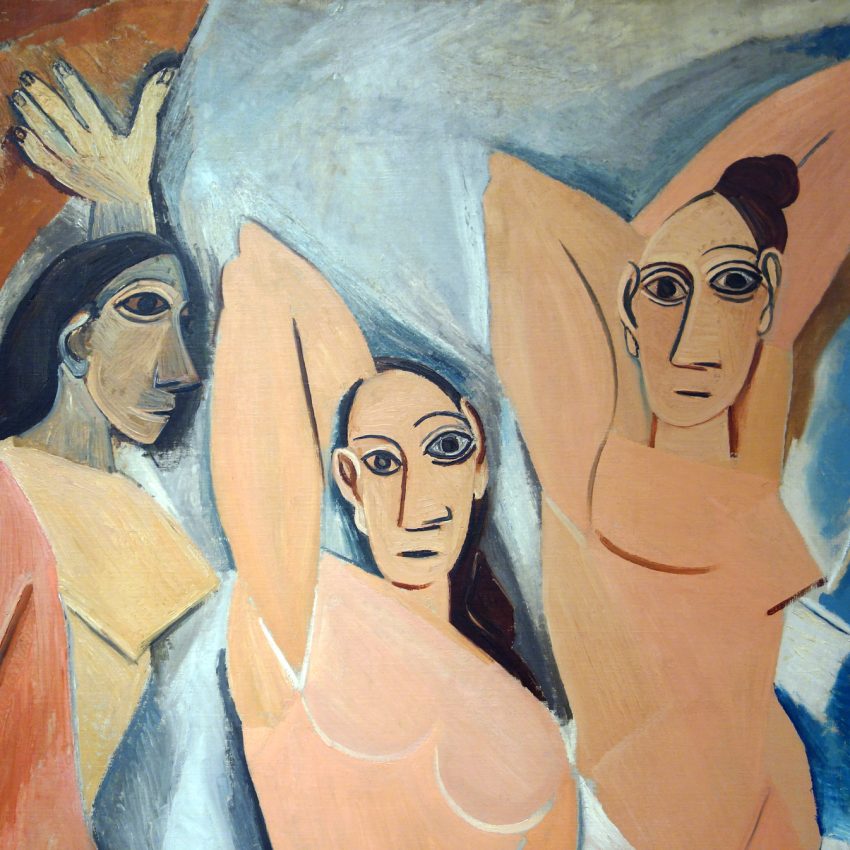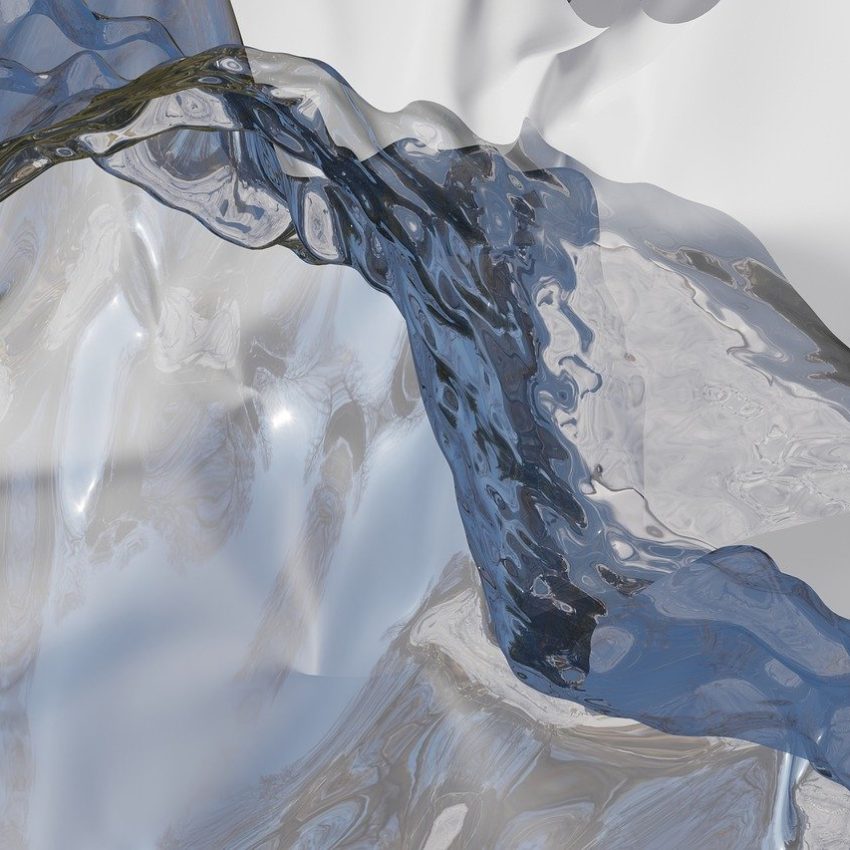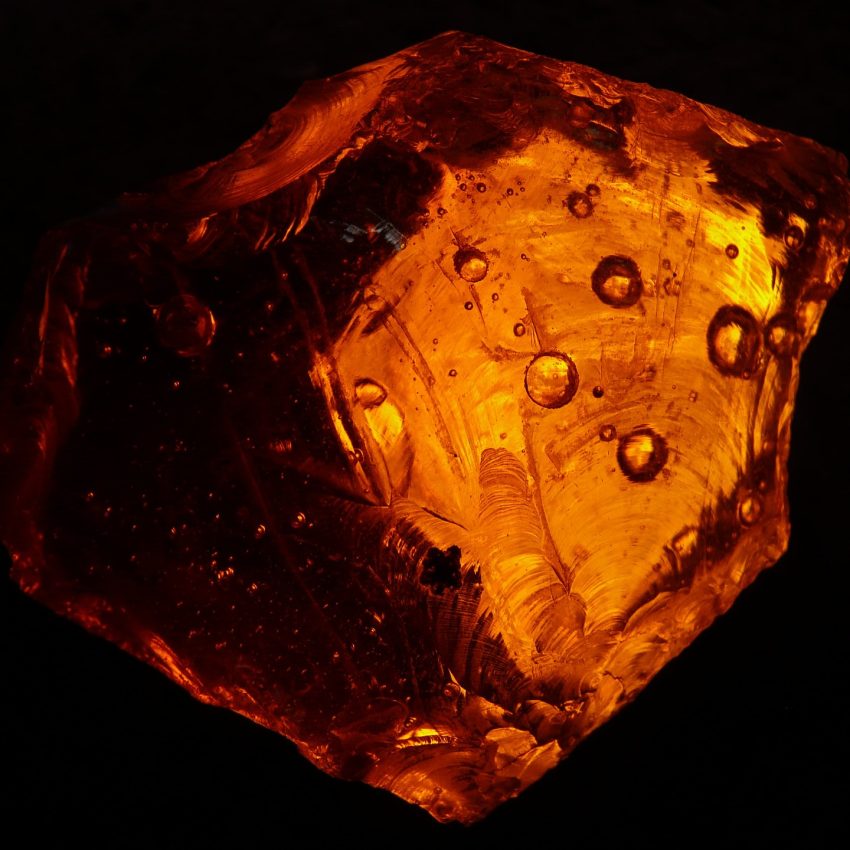The Masterpieces of Medieval Art and Architecture
The Middle Ages Unveiled
Medieval art, often encased within the walls of ancient cathedrals and cloistered manuscripts, serves as a vibrant portal into an era defined by profound transformation and enduring legacies, highlighting the significance of both Gothic and Romanesque art.
The Middle Ages, often termed as the middle age period, extended over a millennium.
Spanning roughly from the 5th to the late 15th century across Europe, this period witnessed the blossoming of art forms that continue to captivate audiences with their intricate beauty and rich historical context.
The medieval era encompasses a multitude of artistic styles and epochs, spanning from early Christian and Byzantine to Viking, Anglo-Saxon, Carolingian, Insular, Romanesque, Ottonian and Gothic periods.
Throughout this epoch, the diverse secular artworks were harmonized under the influence of the Christian church and its associated sacred artworks.
Early Medieval Influences
The start of the medieval art movement coincided with the decline of the Roman Empire around 300 CE, heralding the onset of profound societal and cultural transformations that endured until the beginning of the Renaissance in the early 1400s.
This epoch stood as a pivotal juncture in Western art culture, birthing numerous renowned middle age paintings and fostering significant artistic movements.
Within this expansive timeframe, diverse artistic genres flourished, forged through the amalgamation of various traditions, including influences from the Middle East and Northern Africa, contributing to the tapestry of middle age European artworks.
To delve into art of the history of medieval style and art is to explore a landscape marked by diverse cultures, evolving societies, and monumental shifts in religious thought—all meticulously captured through the hands of master artisans whose names might have faded but whose works remain eternal.
Characteristics of Medieval Art & Illuminated Manuscripts
During the Middle Ages, paintings were imbued with rich religious symbolism and imagery, serving as visual narratives of holy figures and biblical stories.
Medieval artists predominantly depicted scenes of religious significance, often following a hierarchical arrangement dictated by the intended placement of the artwork, a characteristic feature of gothic architecture.
Those portraying more important scenes would occupy prominent positions within churches or altarpieces, while less significant scenes would radiate outward.
These middle age artwork examples encompassed various mediums, including frescoes, panel paintings, illuminated books, and iconography.
While primarily serving religious functions, there was also a noticeable emergence of secular subject matter in Middle Ages paintings.
This shift reflected a transitional period in the visual artworks during the middle age era, as artists’ objectives underwent radical changes, encompassing both religious devotion and secular storytelling.
Rooted in the artistic heritage of the Roman Empire, the iconographic customs of the Early Christian church, and the distinctive “barbarian” style of Northern Europe, middle age artworks emerged as a synthesis of diverse influences.
Embarking on this journey reveals not just an array of artistic styles—from Byzantine effulgence to Gothic grandiosity—but also encapsulates a dialogue between humanity and divinity that characterises much of middle age expression.
These centuries unraveled against backdrops of great plagues, crusades, and schisms that fundamentally shaped human consciousness.
Yet, amidst these upheavals emerged luminous artworks: books preserve wisdom for posterity; stained glass windows filter heavenly light into stone-carved sanctuaries; solemn figures carved in reliquaries reflect devotion materialised.
Before the advent of printing, the term “manuscript,” derived from the Latin words manus (hand) and scriptus (writing), directly translates to “written by hand.”
In the absence of printing presses, books were meticulously copied by scribes who painstakingly transcribed each word with ink and quill pens.
The essence encapsulated in these relics left behind—images rendered with sacred purpose or symbolic intent—invites us into meditation on our own place within history’s vast tapestry.
This exploration is not merely academic; it is deeply personal—a quest engaging both mind and soul amid shadows cast by chiseled saints standing sentinel over forgotten tombs, reflective of the profound depth found in this pre-gothic style.
Venture further with us through serpentine galleries echoing faint chants once sung in monastic seclusion for insights anew into humanity’s relentless pursuit of beauty against epochs’ torrents.
Despite the diversity of styles encompassed by art in the Middle Ages, certain common factors unified its expressions.
Foremost among these was the pervasive influence of Christianity, which left an indelible mark on the art and culture of the period.
Among these were the Early Christian art movement, the Byzantine art movement, the Romanesque art movement, and the Gothic art movement.
Examining Early Christian Manuscripts
Proto-christian books are among the most significant artifacts of art from the middle ages, providing valuable insights into the religious, cultural, and intellectual life of the Early middle age period. These scrolls, often produced by monks in monastic scriptoria, are characterised by their intricate decorations, vibrant colours, and meticulous craftsmanship.
They served not only as vehicles for the transmission of religious texts but also as works of art in their own right, reflecting the spiritual devotion and artistic skill of their creators, an aspect of the rich history of middle age European art. Through the study of premature Christian scrolls, scholars can gain a deeper understanding of the rich tapestry of middle age culture and the enduring legacy of Christianity in Western civilization.
Insular Art: A Fusion of Cultures and Creativity
Origins and Flourishing: Anglo-Saxon art, originating in the British Isles during the Early Medieval period, particularly in Ireland and Britain, flourished between the 6th and 9th centuries AD, a cornerstone in the history of middle age European art.
This distinctive style captivates with its intricate and highly decorative designs, characterized by elaborate interlace patterns, intricate knotwork, vibrant colors, and meticulous detail.
The Book of Kells: Among the most celebrated examples of Insular art is the Book of Kells, a manuscript Gospel book created in late 8th or early 9th century Ireland, now held in part by the Metropolitan Museum of Art.
The medieval book is renowned for its elaborate decorations, including intricate interlace patterns, vibrant colours, and elaborate initial letters, the Book of Kells exemplifies the artistic mastery of Insular craftsmen.
Metalwork and Sculpture: Anglo-Saxon art extends beyond scrolls to encompass metalwork masterpieces such as the Tara Brooch and the Ardagh Chalice, renowned for their intricate designs and exquisite craftsmanship.
Additionally, stone carvings and sculptures found in proto-Christian monastic sites showcase the diverse artistic expressions of Anglo-Saxon period art.
Monastic Influence: Christian monastic communities played a pivotal role in the development and dissemination of Anglo-Saxon, concentrating heavily on medieval period art.
These monasteries served as centers of learning, craftsmanship, and artistic production in middle age Europe, where monks and scribes meticulously created scrolls, metalwork, and other works of art.
The fusion of Celtic, Germanic, and Mediterranean artistic traditions within these monastic settings gave rise to the unique and distinctive style of Anglo-Saxon period art.
The Lindisfarne Gospels stand as a remarkable illuminated manuscript, showcasing the pinnacle of Insular artistry.
It is one of the finest examples of Insular art with influences from the Mediterranean, Anglo-Saxon, and Celtic traditions, exemplifying the rich fusion of diverse artistic elements within the Insular style.
Coptic Art: A Testament to Christian Heritage
Within the vast tapestry of middle age art, Coptic art and Anglo-Saxon period art, emerge as testaments to the enduring legacy of Christian heritage in the ancient world.
Originating in Egypt and influenced by Hellenistic, Roman, and Byzantine traditions, Coptic art flourished during the early Middle age period, preserving and propagating Christian iconography and symbolism in a distinctive visual language.
Iconographic Traditions: Coptic art encompasses a diverse range of artistic expressions, including illuminated scrolls, textile weaving, pottery, and mural painting.
At the heart of Coptic art lies a rich tradition of Christian iconography, with images of saints, biblical scenes, and religious symbols adorning churches, monasteries, and domestic spaces throughout Egypt and beyond.
Influence of Egyptian Heritage: Despite its Christian focus, Coptic art also reflects the influence of Egypt’s ancient cultural heritage, incorporating elements of Pharaonic art and symbolism into its visual vocabulary.
This fusion of Christian and Egyptian motifs imbues Coptic art with a unique aesthetic that speaks to the cultural diversity and syncretism of the medieval world.
Preservation of Tradition: As one of the oldest Christian art traditions, Coptic art played a crucial role in preserving and transmitting the teachings and traditions of early Christianity.
Through its intricate iconography and craftsmanship, Coptic art served as a visual expression of faith, providing a tangible link to the spiritual heritage of the early Church.
Merovingian Art
Merovingian art, originating from the Frankish kingdoms during the 5th to 8th centuries, blends Germanic, Roman, and Christian influences.
Known for intricate metalwork and manuscript illumination, it also encompasses sculpture and architecture.
Despite its brevity, Merovingian art serves as a crucial link between classical and medieval eras, shaping subsequent artistic developments.
Secular Art
In general terms, ‘secular art’—sometimes referred to as ‘profane art’—encompasses objects whose imagery or purpose is not bound by religious doctrines.
However, it’s important to acknowledge that during the later Middle Ages, religion profoundly influenced people’s perceptions of existence, making it difficult to separate secular life from religious beliefs.
Secular art, while less prominent than religious art, was still significant in medieval times.
It depicted everyday life, landscapes, and courtly scenes.
Found in various forms like painting and manuscript illumination, secular art offered insights into medieval society’s values and interests beyond religion.
Commissioned by various social classes, it enriched our understanding of medieval culture and society.
Ottonian art
Ottonian art emerged during the reign of the Ottonian dynasty in the Holy Roman Empire, roughly from the late 10th to the early 11th century.
It marked a revival of artistic expression after the turmoil of the Carolingian era. Ottonian art is characterized by its emphasis on religious themes, intricate metalwork, and manuscript illumination.
This period saw the rise of magnificent illuminated manuscripts, elaborate metalwork such as the famous Ottonian crosses, and the construction of impressive architectural structures like the Abbey of Saint Gall.
Ottonian art played a crucial role in the cultural and religious life of medieval Europe, setting the stage for the artistic developments of the Romanesque period.
Viking Art
Amidst the tapestry of medieval art, their art emerges as a distinctive thread, woven with intricate patterns and bold symbolism reflective of Norse culture.
Flourishing during the Viking Age, roughly spanning from the late 8th to the 11th century, Viking art encompassed a wide range of artistic expressions, from intricately carved wooden objects to elaborately decorated metalwork.
Islamic Art
Islamic art played a significant role in shaping the artistic landscape of the middle age period, particularly in regions where Islamic civilization flourished.
With its emphasis on intricate geometric patterns, intricate calligraphy, and vibrant colors, Islamic art brought a unique aesthetic to the middle age world.
Islamic influences permeated various forms of artistic expression, including architecture, ceramics, textiles, and scroll illumination.
In regions where Islamic and Christian cultures intersected, such as Spain and Sicily, Islamic artistic traditions influenced and interacted with local artistic styles, resulting in a rich fusion of cultural influences known as Islamic art.
This exchange of artistic ideas and techniques contributed to the diversity and richness of middle age art across Europe and the Mediterranean.
The incorporation of Islamic motifs and design principles into middle age art not only enriched the visual vocabulary of the period but also facilitated cultural exchange and dialogue among diverse communities.
As such, Islamic art stands as an integral part of the broader tapestry of middle-age artistic expression, reflecting the interconnectedness of cultures and the dynamic nature of artistic innovation during this period.
The Mediterranean
Art of the Mediterranean during the medieval era encompassed a wide array of mediums, including architecture, painting, sculpture, ceramics, and textiles.
Each region around the Mediterranean contributed its own unique artistic traditions, techniques, and iconography, resulting in a rich tapestry of artistic expression.
In terms of architecture, the Mediterranean region boasted magnificent structures such as Byzantine churches, Islamic mosques, and European cathedrals, each reflecting the religious, cultural, and architectural influences of their respective societies.
These buildings served as not only places of worship but also as symbols of power, prestige, and identity.
Painting and sculpture flourished in the Mediterranean during the medieval era, with artists creating intricate mosaics, frescoes, and reliefs that adorned churches, palaces, and public spaces.
Islamic art, known for its intricate geometric patterns and calligraphic designs, left a significant imprint on the visual landscape of the Mediterranean, influencing both religious and secular artistic production.
Ceramics and textiles were also important forms of artistic expression in the Mediterranean, with craftsmen producing ornate pottery, tiles, carpets, and textiles that were prized for their beauty and craftsmanship.
These objects often featured intricate designs inspired by nature, geometry, and religious symbolism, reflecting the cultural and aesthetic sensibilities of the societies that produced them.
Understanding the Core Styles: Byzantine, Romanesque, and Gothic
Byzantine Art's Divine Representation
The journey through middle age art reveals an intricate tapestry of styles and techniques that not only reflected the period’s societal values but also its spiritual aspirations.
Early Byzantine art, marking the transition from the classical Roman tradition to the Byzantine Empire, holds a distinctive place in this narrative.
Transition and Continuity: Early Byzantine art emerged as the Eastern Roman Empire transitioned into the Byzantine Empire, blending classical Roman artistic traditions with new influences from the Eastern Mediterranean.
This period witnessed the continuation of classical forms while introducing elements of Eastern mysticism and spirituality.
Divine Majesty and Imperial Splendor: This art reflected the grandeur and majesty of the Byzantine Empire, with an emphasis on imperial iconography and divine symbolism, aspects later mirrored in Carolingian art.
Byzantine emperors were depicted as god-like figures, embodying both earthly power and divine authority, which is a hallmark theme in the art of the Middle Ages.
This fusion of imperial and divine imagery served to reinforce the Byzantine concept of symphonia, the harmonious relationship between church and state.
Iconographic Innovation: It saw the development of new iconographic forms and styles, including the iconic image of Christ Pantocrator (Ruler of All), which became a central motif in Byzantine religious art.
The use of gold backgrounds and rich, vibrant colors imbued these images with a sense of divine radiance and transcendence.
Early Byzantine art thus played a crucial role in shaping the visual culture of the Byzantine Empire, setting the stage for the golden age of Byzantine art that would follow in the centuries to come.
Romanesque Art's Educational Storytelling
Transitioning into the Romanesque period marked a pivotal shift in both form and function within middle age artistry, inaugurating a new era in early middle age art and architecture.
Architectural Marvels: Romanesque artistic movement is perhaps best known for its architectural achievements, characterized by thick walls, rounded arches, and massive structures that imbued churches and cathedrals with a sense of grandeur and solidity.
Examples of Romanesque style in architecture include the majestic cathedrals of Santiago de Compostela in Spain, Durham in England, and Speyer in Germany, each adorned with intricate carvings and sculptural reliefs.
Stone Narratives: The visual language of Romanesque arts, a key aspect of early medieval art, extended beyond architecture to encompass sculpture and relief work, with churches adorned with elaborate stone carvings and medieval sculpture.
These carvings often depicted scenes from the Bible and Christian iconography, serving as visual narratives that conveyed religious stories and moral teachings to a largely illiterate populace.
Reliquaries and Metalwork: In addition to architecture and sculpture, the Romanesque style also encompassed metalwork and reliquaries, including ornate containers designed to hold relics of saints and martyrs.
Examples of Romanesque metalwork include the famous Shrine of the Three Kings in Cologne Cathedral and the Pala d’Oro in St. Mark’s Basilica in Venice, both renowned for their intricate craftsmanship and lavish decoration.
Romanesque art thus represents a period of artistic innovation and cultural flourishing, characterized by its monumental architecture, rich symbolism, and intricate craftsmanship.
Gothic Art's Heavenly Aspirations
Finally, entering the realm of Gothic period. The style unveiled an evolution towards lightness—a stark contrast from its predecessors—with towering spires reaching for heavens unseen but profoundly felt.
Stained glass windows became expansive canvases telling colorful stories richly layered with theological significance while illuminating church interiors like divine beacons—literally coloring sunlight as it filtered into sacred spaces promoting introspection amongst congregants below.
Each era—Byzantine focused on divine contemplation; Romanesque steeped in educative story-telling through sculpture; Gothic lifting spirits skyward through light-play—independently significant yet collectively contributing towards a deeper understanding not just of faith but human expression beyond secular confines.
Iconography and Symbolism in Medieval Art
Art as Spiritual Beacon: In the midst of middle age shadows and whispers, art emerged as a beacon of spiritual guidance and moral instruction.
With society deeply entrenched in religious beliefs, churches became the beating hearts of communities.
In an era where literacy was scarce, visual representations became indispensable tools for conveying complex theological concepts to the masses, illustrating the crucial role of art throughout these times.
Thus, artists evolved into storytellers, using their chisels and brushes to weave intricate narratives about faith, salvation, and divine intervention. middle age art transcended mere aesthetics; it became theology made visible, shaping the spiritual landscape of the time.
Unveiling Symbolic Layers: Beneath the surface of medieval paintings and sculptures lies a labyrinth of symbols—a language that speaks volumes beyond what meets the eye.
Take, for example, the image of the lamb alongside Christ—an apparently innocuous depiction laden with profound meaning.
Here, the lamb symbolizes both innocence and sacrifice, embodying Christ as ‘the Lamb of God’ who bears humanity’s sins.
Similarly, the use of color held significant theological connotations in medieval art history; blue, symbolizing divinity, adorned figures such as Mary, underscoring her central role within Christian doctrine.
Through such symbol-laden imagery, middle-aged artists crafted layered works teeming with theological nuances, inviting viewers to decipher their hidden meanings.
Journey Beyond the Temporal: The rich tapestry of middle-age art, woven with threads of gold leaf backgrounds and illuminated scroll, transcends temporal bounds, leading viewers into eternal realms envisioned by the artists of centuries past.
Whether through the kaleidoscopic hues of stained glass windows or the intricate frescoes adorning chapel walls, middle-aged art continues to evoke awe and reverence, inviting contemporary audiences to contemplate life’s greatest mysteries through the lens of religious expression.
The Luminary Figures Steering the Medieval Art Movement
Exploring Medieval Artistic Styles and Periods
Over the span of ten centuries, the Middle age period witnessed the blossoming of a diverse array of artistic styles and periods, each leaving an indelible mark on the cultural landscape of Europe.
From the proto-Christian and Byzantine to the Anglo-Saxon and Viking, and from the Romanesque to the Gothic, this epoch was characterised by a rich tapestry of artistic expression.
Grand monuments and architectural marvels such as the iconic Hagia Sophia in Constantinople, the exquisite mosaics of Ravenna, and the illuminated scroll like the Lindisfarne Gospels emerged as enduring symbols of middle-age artistry.
The prolific output of art during the medieval period continues to be of immense historical significance, captivating the interest of scholars and collectors alike who are fascinated by the many art forms that flourished during these times.
Moreover, the artistic achievements of the Middle age era laid the groundwork for the evolution of modern genres of Western art, shaping the course of artistic history for centuries to come.
A good way to explore the period, forms of art, and artists is at the Met Museum.
The Metropolitan Museum acquired its first medieval object in 1873, the core of the collection at the Main Building didn’t take shape until nearly fifty years later, in 1917.
It was then when the son of financier and collector J. Pierpont Morgan donated around two thousand medieval objects from his father’s collection.
Since then, the collection has expanded through purchases, gifts, and bequests.
Notably, more than 250 medieval objects were added to the Museum in 1941 by the banker and prolific collector of medieval art, George Blumenthal.
Other significant contributors to the collection include Michael Friedsam, George and Frederic Pratt, and Irwin Untermyer.
In the later 19th century, numerous book illustrators and creators of decorative art embraced medieval styles with success, influenced by the emergence of institutions like the Victoria & Albert Museum, specifically established for this pursuit.
Concurrently, the burgeoning academic discipline of art history, primarily led by Germany and France, placed significant emphasis on medieval art.
This scholarly endeavor proved fruitful in cataloging and dating extant works while delving into the evolution of medieval styles and iconography, significantly enriching our understanding of the period include medieval art.
However, the period preceding Carolingian art, known as Late Antique, remained relatively unexplored until the 20th century.
Carolingian architecture, prevalent during the 8th and 9th centuries AD, bridges late Antique and early Medieval styles.
It’s marked by a revival of Roman forms fused with Germanic influences.
Notable for grand palaces and monasteries like the Palace of Aachen, it employs basilica plans, vaulted ceilings, and monumental entrances.
These structures played a role in spreading Christianity, with basilica-style churches accommodating large congregations.
Carolingian architects also advanced construction techniques, setting the stage for future architectural styles.
Pioneers of Innovation: Giotto di Bondone and Hildegard von Bingen
Among the constellation of talents that illuminated middle age Europe, two figures stand out for their revolutionary contributions: Giotto di Bondone and Hildegard von Bingen.
Despite operating in markedly different spheres of the artistic realm, both artists left an indelible mark on the canvas of history with their groundbreaking works.
Giotto di Bondone, often hailed as the harbinger of Renaissance art, boldly departed from the rigid conventions of the Byzantine style prevalent during his era, marking a pivotal moment in the history of middle-age European art.
Introducing a form characterized by remarkable realism and emotional depth, Giotto’s frescoes adorned The Scrovegni Chapel in Padua, testifying to his mastery over perspective and human emotion.
Through vivid narratives from Christ’s life and expressive faces, Giotto revolutionized mural painting, inspiring countless Renaissance artists with his innovative techniques.
In contrast, Hildegard von Bingen—a polymath, abbess, and visionary artist—merged spiritual insights with creativity to produce illuminations that defy simple categorization within medieval art traditions.
Her mystical tapestries intricately wove theological concepts with rich symbolism, reflecting the intricate metalwork of the Anglo-Saxon period blended with Christian themes.
Hildegard’s unique blend of spirituality and artistic finesse, exemplified in her ‘Scivias’ codex, stands as a testament to her profound mystic visions and intellect, leaving an indelible mark on the artistic legacy of the medieval era.
Together, Giotto and Hildegard sculpted pointers guiding future generations and endowed medieval European artistry with dimensions unfathomed before their era, underscoring their immovable status amidst history’s artistic luminaries.
Bridging Centuries: Medieval Art's Echo in the Modern Canvass
In the labyrinth of modern art history, medieval art stands as a towering beacon, its influence seeping subtly yet noticeably into contemporary masterpieces.
The echoes of this bygone era are not mere whispers but vibrant dialogues between past and present artists across generations.
One can trace the lineage of gothic architectural elements in the sculptural installations seen in today’s avant-garde exhibitions or recognize the somber yet rich color palettes reminiscent of medieval tapestries adorning galleries hosting modern expressionist painters.
This cross-temporal dialogue underscores how medieval aesthetics continue to inspire, challenging contemporary artists to explore themes of spirituality, transcendence, and human experience with a depth enriched by historical context.
Moreover, the resurgence of interest in artisanal crafts and techniques—once staples of medieval artistic production—amongst modern creators showcases a tangible dimension of this influence.
Techniques such as gold leaf gilding, fresco painting, and illuminated scroll creation have been revived and reinterpreted within a 21st-century framework, drawing inspiration from the extensive traditions of art in Europe, particularly during the medieval era.
Artists like Kehinde Wiley explicitly reference these methodologies alongside visual motifs from medieval works to comment on socio-political issues relevant today, creating pieces that resonate with viewers across time through shared aesthetic lexicons.
As we move forward into an increasingly digitalized future for art production and consumption, engaging with historic practices offers profound insights about sustaining humanity’s creative spirit amidst evolving mediums.
What unfolds is a compelling narrative where ancient craftsmanship informs digital innovation; classical forms breathe life into abstract expressions—making it Üevident that our current artistic epoch is not isolated but deeply enrooted in centuries-old traditions.
From illuminating manuscripts’ intricate borders finding their parallels in graphic novels to monumental cathedral facades inspiring immersive virtual reality experiences—the essence drawn from medieval art enriches contemporary culture far beyond aesthetics; it shapes philosophies surrounding creativity itself thereby forging an indelible legacy that transcends medium boundaries.
Conclusion
As the medieval era transitioned into the early sixteenth century, the art created continued to shape the understanding of medieval culture and society.
Medieval Europe witnessed a rich tapestry of artistic expression, encompassing weird Anglo-Saxon period art, enigmatic proto-Christian art, and intricate insular art.
Throughout the early medieval era, European art flourished, paving the way for major art movements like Gothic architecture and Romanesque architecture.
Art historians classify medieval art into various styles, reflecting the values of classical art while influencing the development of later Western art.
From late Roman art to Carolingian art, the history of medieval art is vast and diverse, with many famous examples of medieval art found in museums like the Walters Art Museum.
The International Center of Medieval Art and Oxford Art Online provides valuable resources for scholars studying medieval objects.
Upcoming Event: An Exploration of Medieval Art History.
LMU Munich hosts an international conference titled “Fresh Insights into Personifications in Roman, Late Antique and Early Byzantine Art (200-800 AD)” on January 26th and 27th, 2024.





